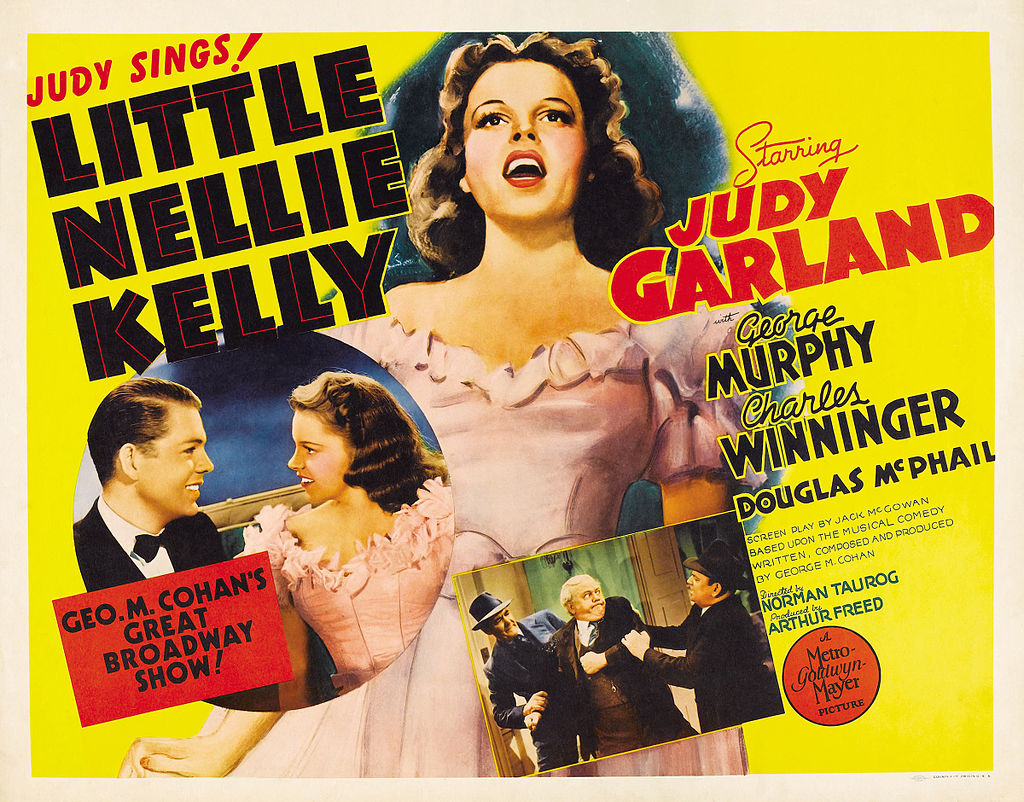The Irish American folksong canon is a mix of ballads, vaudeville, traditional music — and the business acumen of Tin Pan Alley
 Little Nellie Kelly film poster (public domain)
Little Nellie Kelly film poster (public domain)WITH St Patrick’s Day looming on the horizon, the Taoiseach Micheál Martin has confirmed he will visit Washington as per tradition.
So the White House will go green for the day, and one thing we can be sure of — there will be plenty of Irish music echoing round Washington on the day.
The interchange of music between America and Ireland has had a long history, affecting and influencing traditional music, rock music, showband music and of course country & Irish.
From the ballads carried by Irish immigrants in the 19th century to the vaudeville tunes of the early 20th century and the later evolution of Irish American folk and rock, the music has been a vital means of cultural expression and identity.
This many branching musical tree has left a sub-genre of music, sometimes called Tin Pan Alley Irish music, sometimes Stage Irish, but more often than not just Irish American Irish music. It is made up of songs such as When Irish Eyes Are Smiling, My Wild Irish Rose, Did Your Mother Come From Ireland, MacNamara’s Band et al.
The Diaspora in Britain indulged in this type of nostalgia too, of course, but also quietly went about the business of inventing the traditional pub session and ultimately contributing songs such A Fairytale of New York to the treasure trove.
But the USA played its part in developing Irish music.
Millions left Ireland for the New World, and in America the music flourished — in time it would awaken interest in the tradition back home.
But Irish America’s most predominant musical image was a body of songs that were a celebration of being Irish, soon to be coupled with the mainstream music and mainstream culture of America.
These songs largely rely on one thing that is a big motivator in the music of the emigrant: nostalgia. Ballads are full of wistfulness for an Ireland long gone — if it ever existed at all. In Tin Pan Alley in the USA its true economic potential was spotted.
As Irish immigrants became more assimilated into American society, their music also evolved, blending with other musical influences. By the late 19th and early 20th centuries, Irish-themed songs composed for the American market became a staple of the era’s popular music. These songs, often sentimental and romanticised, catered to both Irish Americans longing for their ancestral homeland and the broader American audience that found charm in Irish culture.
They soon became part of mass entertainment — stage musicals, popular music on the radio, and silver screen.
Judy Garland, with her very distant Co. Meath ancestry, recorded The Wearing of the Green for the film Little Nellie Kelly, adapted from the stage version of the show George M. Cohan. The song was ultimately dropped, but the show’s other big number It’s a Great Day for the Irish became an enduring hit.
Little Nellie Kelly is a 1940 American musical-comedy film based on the stage musical of the same title by George M. Cohan which was a hit on Broadway in 1922 and 1923Its cast included Judy Garland, George Murphy, Charles Winninger and the prolific actor Arthur Shields (Dublin actor).
Another Broadway musical contributed more songs to the Irish American canon. The Heart Of Paddy Whack (1914) features A Little Bit of Heaven Fell Out of the Sky (and They Called it Ireland) co-written by Chauncey Olcott, Jacob Keirn Brennan and Ernest Ball.
Bing Crosby, an Irish American, popularised many Irish-themed songs, including Too-Ra-Loo-Ra-Loo-Ral (That's an Irish Lullaby), which he famously sang in the 1944 film Going My Way. His smooth, sentimental interpretations of Irish songs cemented them as part of America’s musical lexicon.
Other nationalities had by now jumped on the Irish bandwagon. I’ll Take You Home Again Kathleen was written by a German-American, Thomas P Westendorf, for his wife Jennie. Publishers, spotting the marketability of the Irish American market, changed Frau Westendorf’s name to Kathleen.
Thus Irish music made its way through the 20th century, crisscrossing from Ireland to Britain to America, and back again.
Riverdance in the mid 1990s did as much to complete the publicising of Irish music round the world in the 20th century.
Put simply, the show started when two Irish American dancers won a competition for European singers. In a way it is an apt metaphor for Irish music itself. Ireland today is recognised as having one of the richest musical heritages in the world. But to arrive in the 21st century with a vibrant tradition requires a lot of effort, and several diverse ingredients — not least the emigrant experience.
While Irish American music plays on Irish stereotypes, it also reflects the resilience and strength of the Irish working-class community in America. Just as in Britain Irish immigrants often faced discrimination and were caricatured as unruly and violent, yet they also gained a reputation for their hard work and fighting spirit. The song became a light-hearted way for Irish Americans to embrace and subvert these stereotypes while taking pride in their toughness.

